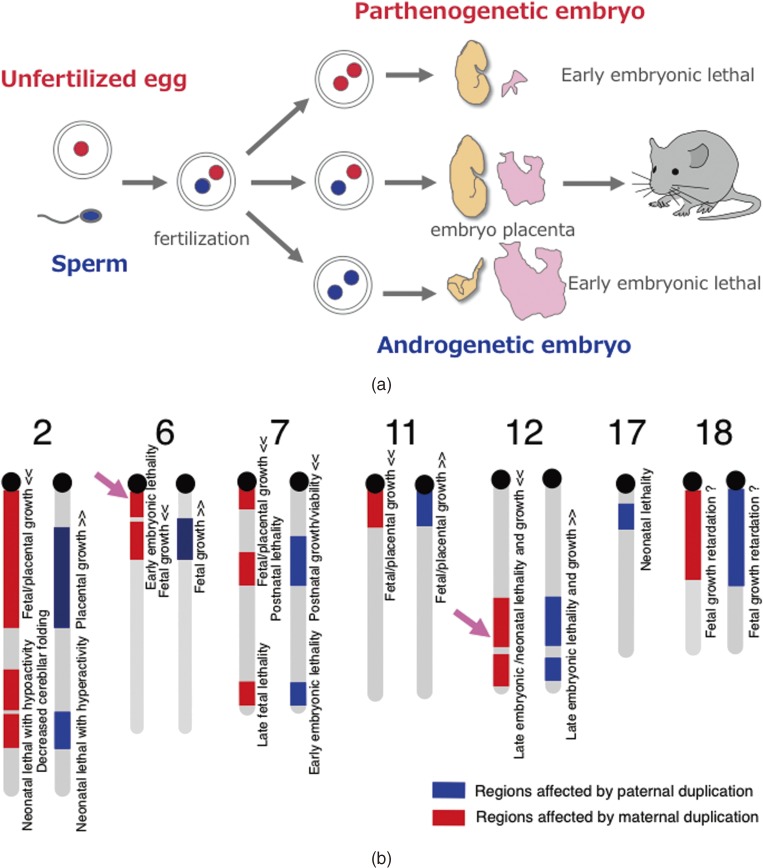Figure 1.
Discovery of genomic imprinting. a. Pronuclear transplantation experiments. Both parthenogenetic and androgenetic embryos exhibit early embryonic lethality with totally different morphological defects on developmental day 10.5. b. Mouse genomic imprinting map deduced from a series of Robertosonian translocation experiments. The abnormal phenotypes observed in mice with partial uniparental duplications are shown. Modified from data in ref. 6. It should be noted that imprinted regions usually comprise both Pegs and Megs (see also Figs. 2 and 3a) and that most of them are conserved in eutherians, including humans, although some are lineage-specific (see also Fig. 6). Pink arrows indicate the imprinted regions associated with early embryonic lethality upon maternal duplication (left) and late embryonic lethality upon paternal duplication (right) where Peg10 and Peg11/Rtl1 were discovered afterwards, respectively.

